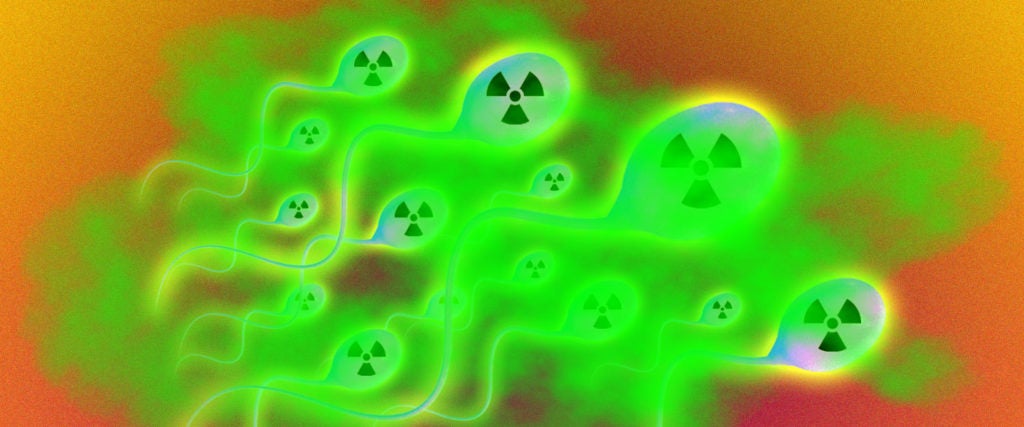One of the most mentally taxing effects of chemotherapy and other radiation-based medical treatments is the fact that their impacts on the body can be carried on to future children, or be responsible for the lack thereof. In men, chemo can potentially cause DNA mutations and chromosomal damage to sperm that, if pregnancy does occur, leads to serious birth defects or even infant fatality. While there isn’t yet an accessible way to track whether or which sperm are carrying these mutations or damage, recent research offers a promising development in making that possible.
In late December, researchers at the Lawrence Livermore National Laboratory and the Lawrence Berkeley National Laboratory published a study in PLOS ONE stating they’d had success in establishing a technique for DNA analysis. It’s called fluorescence in situ hybridization, or FISH, and can be used to analyze sperm, specifically. With it, they can look for problems like an abnormal number of chromosomes and chromosome breaks, rearrangements and deletions, all of which can be caused by radiation treatment. FISH works by essentially giving color to these specific abnormalities at the DNA level, revealing the location of various sequences or chromosomes.
- Read Next: To Avoid Prostate Cancer, Chug Coffee Like Your Life Depends On It (Which It Actually Might)
According to one of the study authors, the method can also detect “balanced chromosomal abnormalities,” or changes in the chromosomal arrangement that may not present a threat to the viability of a pregnancy, but can impact the future fertility of the children later on.
The study utilized nine male patients receiving treatment for Hodgkin’s lymphoma, a cancer of the lymphatic system more likely to affect men. Patients each gave 20 sperm samples before, during and after undergoing a combination of chemotherapy drugs and radiation. During treatment, the sperm samples contained 10 times more chromosomal abnormalities than sperm samples provided prior to it. However, levels returned to normal six months after treatment was completed.
While the Hodgkin’s lymphoma patients could safely pursue pregnancy without much genetic risk after that time period, this may not be the case for people with other cancers requiring longer treatments. As such, using the FISH method on different samples, or eventually making it widely available as a test, could help others who have had chemo or radiation feel safe having children. And while the research is still in its very early stages, the authors expect it could one day be available in doctor’s offices.

